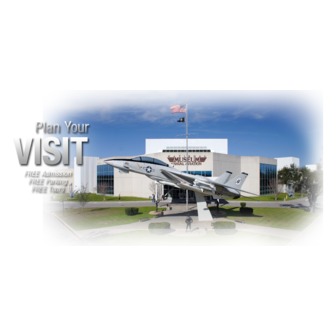National Naval Aviation Museum





During the twentieth century, commonly called "The American Century," few military organizations played a more crucial role than Naval Aviation. In war at sea, eclipsing the battleship as the decisive weapon, aircraft carriers projected their powerful air wings over vast expanses of water, striking with surprise at enemy fleets and land bases, then disappearing with equal swiftness. In times of peace, the carrier and her battle group provided American political leaders a flexible, always ready and potent way to respond to regional crises wherever and whenever American vital interests were threatened. "Where are the carriers?" has been the first question asked by American presidents at the start of every national security crisis since the end of World War II.
Naval Aviation has also been at the cutting edge of aerospace expeditions, from the first successful crossing of the Atlantic by an aircraft, exploration of the Arctic and Antarctic, and journies of discovery into outer space. The common denominator for those who participated in this exciting history was their training in a sleepy little Southern city on the Gulf of Mexico: Pensacola, Florida, the site of the nation's first naval air station. Since 1914, it was here that the fledglings tested their mettle against the demands of flying aircraft. They learned the unique skills required to fly from ships at sea, find distant targets and return to their moving, rolling and pitching "airfield," often in bad weather and frequently at night. It makes perfect sense that Pensacola has a world-class Museum to commemorate its place, and that of Naval Aviation, in history.
The mission of the National Naval Aviation Museum, an official Department of the Navy museum, is to "select, collect, preserve and display historic artifacts relating to the history of Naval Aviation."
At the core of the Museum's collections are more than 700 aircraft - most of which are on display at other museums, with approximately 150 located aboard Naval Air Station Pensacola. These include record-setting aircraft like the NC-4 flying boat, the first plane to fly across the Atlantic, as well as combat veterans, including the SBD Dauntless that flew at the Battle of Midway, two Vietnam MiG-killers, an A-7 Corsair II that logged missions over Iraq during Operation Desert Storm and the last F-14 Tomcat to fly a combat mission.
Though the aircraft are the largest of the Museum relics, they are just one dimension of the collection. More than 4,000 uniforms, flight gear, weaponry, medals and decorations add a personal touch to the story of Naval Aviation. In addition, the Emil Buehler Naval Aviation Library, which houses personal and official papers of prominent Naval Aviators, squadron records and a photograph collection numbering more 350,000 images, is a significant repository of Naval history and draws researchers from around the world.
As the Museum has grown, so has its popularity. In the last decade alone, visitation has more than doubled, approaching one million in some years. The National Naval Aviation Museum has achieved recognition as one of the world's premiere air and space museums and one of the most-visited museums in Florida. The Museum also received the prestigious American Association of Museums' accreditation in 2002. Our visitors come from every state in the Union and more than 60 foreign countries. On a given day, more than 70 percent of our visitors are from outside Florida. With each addition to the Museum, there has been a commensurate increase in visitation.
Explore Related Categories







